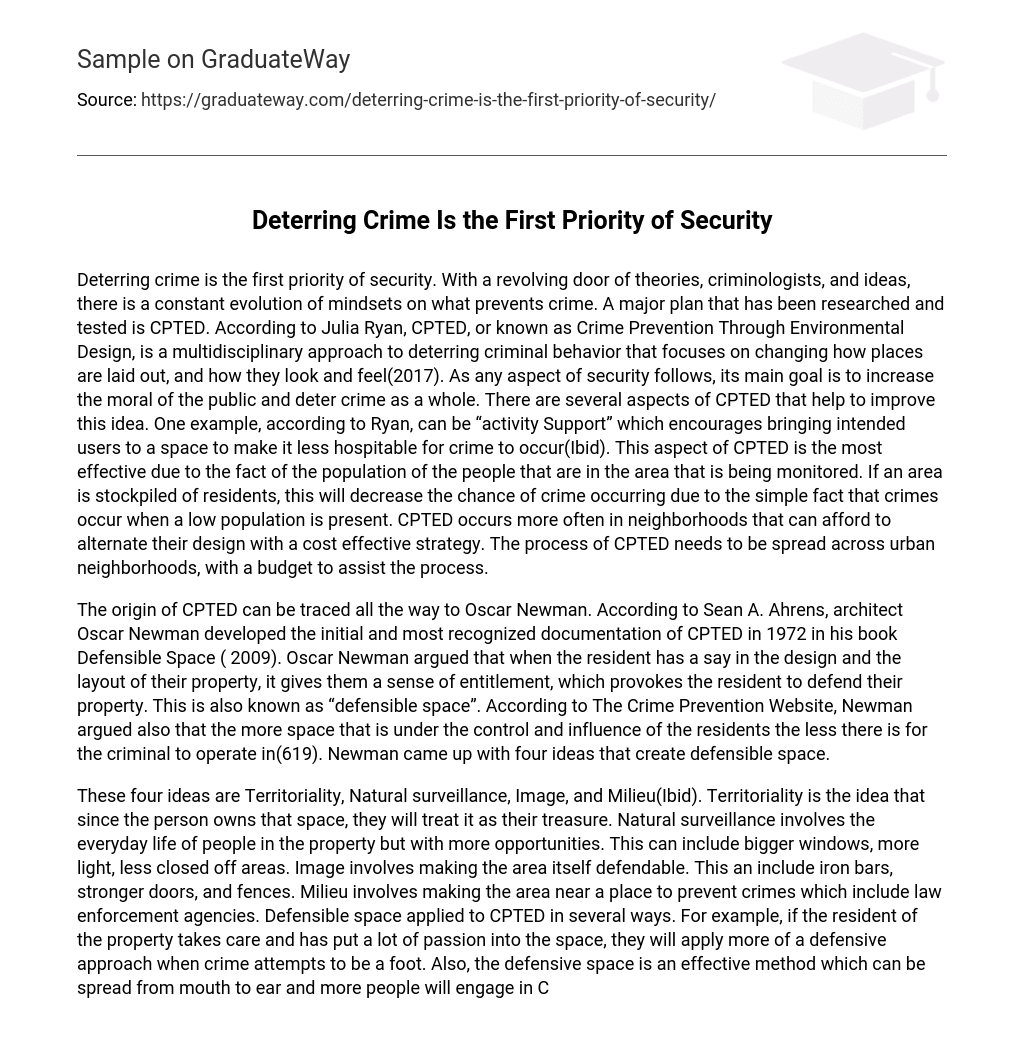Deterring crime is the first priority of security. With a revolving door of theories, criminologists, and ideas, there is a constant evolution of mindsets on what prevents crime. A major plan that has been researched and tested is CPTED. According to Julia Ryan, CPTED, or known as Crime Prevention Through Environmental Design, is a multidisciplinary approach to deterring criminal behavior that focuses on changing how places are laid out, and how they look and feel(2017). As any aspect of security follows, its main goal is to increase the moral of the public and deter crime as a whole. There are several aspects of CPTED that help to improve this idea. One example, according to Ryan, can be “activity Support” which encourages bringing intended users to a space to make it less hospitable for crime to occur(Ibid). This aspect of CPTED is the most effective due to the fact of the population of the people that are in the area that is being monitored. If an area is stockpiled of residents, this will decrease the chance of crime occurring due to the simple fact that crimes occur when a low population is present. CPTED occurs more often in neighborhoods that can afford to alternate their design with a cost effective strategy. The process of CPTED needs to be spread across urban neighborhoods, with a budget to assist the process.
The origin of CPTED can be traced all the way to Oscar Newman. According to Sean A. Ahrens, architect Oscar Newman developed the initial and most recognized documentation of CPTED in 1972 in his book Defensible Space ( 2009). Oscar Newman argued that when the resident has a say in the design and the layout of their property, it gives them a sense of entitlement, which provokes the resident to defend their property. This is also known as “defensible space”. According to The Crime Prevention Website, Newman argued also that the more space that is under the control and influence of the residents the less there is for the criminal to operate in(619). Newman came up with four ideas that create defensible space.
These four ideas are Territoriality, Natural surveillance, Image, and Milieu(Ibid). Territoriality is the idea that since the person owns that space, they will treat it as their treasure. Natural surveillance involves the everyday life of people in the property but with more opportunities. This can include bigger windows, more light, less closed off areas. Image involves making the area itself defendable. This an include iron bars, stronger doors, and fences. Milieu involves making the area near a place to prevent crimes which include law enforcement agencies. Defensible space applied to CPTED in several ways. For example, if the resident of the property takes care and has put a lot of passion into the space, they will apply more of a defensive approach when crime attempts to be a foot. Also, the defensive space is an effective method which can be spread from mouth to ear and more people will engage in CPTED.





